Leading All-Through schools – the same or different?
Alma Harris & Michelle Jones.

Introduction
In many countries, the idea of an All-Through school is relatively unfamiliar, as schooling tends to follow the traditional division between primary/elementary schools and secondary/high schools. Yet in some education systems, the notion of All-Through schooling is gaining momentum for a wide range of reasons, including greater cost efficiencies and the absence of distinct transition phases which can be disruptive for students (Symonds Citation2015). Being able to achieve greater cost effectiveness through the sharing of resources in a variety of ways is a perceived strength of an All-Through school. Undoubtedly, there are economies of scale that can be achieved through combining phases and resources i.e. the provision of staff facilities, catering, repair and maintenance, health and safety, etc.
Essentially, All-Through or All-Age schools, as they are called in some systems, combine at least primary and secondary stages of education, and can also incorporate nursery and sixth forms within a single, overarching institution. This is one school comprising all or multiple phases of education overseen by one governing body. An All-Through school often occupies a single site or will have joined its previously separate school campuses into one.
Working in an All-Through institution provides the unique opportunity to make significant changes to the continuity, progression, and relevance of the curriculum. An All-Through school can also provide opportunities to enhance all aspects of community development, both within and beyond the boundaries of the school.
All-Through schooling is a model reflected most clearly in the international-schools sector where combining phases is the established way of working. The literature on international schools concerns itself largely with describing and analysing the structures, processes and practices reflected within international schools. This research base, however, lacks a critical mass of robust empirical studies which makes navigating the literature difficult. While some writers touch upon the leadership of international schools (Cravens Citation2018), the existing evidence base on this topic is neither extensive nor conclusive.
Outside the international-schools sector, this joined-up model of schooling has been adopted by many countries, to different degrees. In Iceland, all schools operate on an All-Through basis and in Spain more All Through schools are currently being established.
An All-Through model of schooling is also reflected in England with All-Through Academies (Hodgson Citation2011) and increasingly, there are growing numbers of All-Age schools in WalesFootnote1 which has prompted two major, contemporary research projects.Footnote2
Most typically, in All-Through schools-
Children follow the same educational/pedagogical journey offered by the school, over time.
Teachers know pupils over a longer period, thus offering young people greater stability and more personalised learning opportunities.
There are no disruptive transition phases for learners, so the anxiety associated with transition is removed.
Primary-age pupils have access to state-of-the-art specialist subject facilities used by secondary schools e.g. science labs, sports halls.
Primary and secondary specialists work together and there is teaching across phases offering opportunities for rich professional learning and growth.
Secondary pupils can mentor and support primary age pupils in the same school.
Links with the community are deeper because children stay in one school, so links with parents, families and carers become very well established.
Leadership teams tend to reflect a mix of expertise that covers all stages or phases of learning.
As noted earlier, the research base on All-Through schools is diverse and wide-ranging, hence evidence about the leadership practices within such schools remains patchy.
Leading All-Through schools
In terms of the leadership of All-Through schools, the question is whether school leadership models and practices are the same or different? While this seems a straightforward question to ask, the international evidence does not readily present a clear or unequivocal answer. There is quite literally an overwhelming number of research studies that focus on leaders either in primary or secondary schools, to various degrees, of varying quality, in different countries.
By comparison, reliable studies of leaders in All-Through schools, written in English, are very thin on the ground. It is fully acknowledged that hidden literature about leading All-Through schools might exist, written in other languages, but the accounts of leading All-Through schools, in the medium of English, tend to be in short supply. Where they do exist, such accounts tend to be so contextually bound that any generalisation is simply impossible.
So why be concerned about leadership in such settings at all? Surely the vast school leadership literature speaks generally to all school leaders and hence, covers all the bases. In some respects, this is true as the evidence on school leadership is robust and largely confirmatory. For example, the knowledge base on school leadership has been summarised into ‘7 Strong Claims’, that empirically underscore effective school leadership practices, models, and actions (Leithwood, Harris and Hopkins Citation2020). Yet there is also a body of evidence that signals the importance of context-responsive leadership and the need for leaders to adapt their practices to the specific needs of the school, its community, its students (Fancera Citation2022). So, is leading an All-Through school, the same or different?
Looking at the available evidence on All-Through schools, underlines some of the specific challenges that school leaders face. For example, there is the challenge of leading a large, complex school with different phases of learning with competing demands and priorities. It is usual for all All-Through schools to have an extended leadership team, simply to cover the breadth and depth of issues that arise. Sometimes there is an Executive Headteacher, who oversees the whole operation with an extended leadership team who have specific leadership responsibilities across the different phases.
In All-Though schools it is also possible to find a more traditional leadership structure of heads, deputy heads and assistant heads that take responsibility for different parts of the operation. In summary, the models of leadership vary in All-Through schools according to scale, need, context and structure.
For the headteacher of an All-Though school, there is also the challenge of leading colleagues who have expertise in a phase where they have little experience or familiarity. It is unusual for headteachers in secondary schools to have substantial primary leadership experience (and vice versa). For staff joining an All-Through school, whether with a primary or secondary background, there is the inevitable sense of loss when moving from a school where their expertise was congruent and shared, to a larger, more diverse, unfamiliar school setting where they may be required to teach across phases for the first time.
For leaders of All-Through schools, their preparation for the role is often minimal, as it is assumed that an effective school leader is an effective school leader, irrespective of context. While this is true up to a point, the shift in gear required to lead an All-Through school can be quite dramatic and the scale of the challenge can prove to be enormous, if not overwhelming, in some cases.
This shift in gear would suggest the need for some bespoke professional learning or development programmes, some mentoring and support, and some specific preparation time for such a radically changed leadership role. While the leadership skills or requirements might indeed be the same in All-Through schools, as for any other school, the leadership demands are certainly vastly different.
As more All-Through schools join the educational landscape of various countries and more All-Through leaders are needed, it would seem both appropriate and necessary to ask whether there is adequate preparation, development, and support for those leading All-Through schools. It would also seem vitally important that contemporary research is undertaken on leadership in All-Through settings, so that a body of robust and reliable evidence is established to inform such guidance and support. It is remarkable that so much is asked and expected of leaders in All-Through schools, yet the research on this form or brand of leadership is so woefully inadequate.
We are all familiar with articles ending with the plea for more research on a topic but in the case of leadership in All-Through schools this plea is imperative and urgent. We simply do not know whether, how and in what ways, leadership in All-Through schools is the same or different to leading any other type of school.
Such an omission in the leadership knowledge base means that, by default rather than design, targeted development, support, and training are currently missing for those who lead All-Through schools or aspire to this school leadership role. Given that the demands placed upon the leaders of All-Through schools are so extensive, it is odd that so little is known about the dimensions of this leadership role in action. Unquestionably, more research is needed. Those charged with leading All-Through schools, should expect more and quite honestly, deserve more.
Notes
2 Welsh Government funded project on All Age Schools and ERASMUS plus funded project on All Age Schools
References
- Cravens, X. 2018. “School Leadership in International Schools: Perspectives and Practices.” Peabody Journal of Education 93 (5): 584–588.
- Fancera, S. 2022. “The Role of Context on Leadership Transition: Building to District-level Leadership.” Journal of Organizational & Educational Leadership 7 (2): 5.
- Hodgson, G. 2011. Creating a Climate of Intelligent Accountability in All-Through Academies, National College for School Leadership. https://core.ac.uk/download/pdf/4159391.pdf.
- Leithwood, K, A Harris, and D Hopkins. 2020. “Seven Strong Claims about.” Successful School Leadership Revisited. School Leadership and Management 40: 5–22. https://doi.org/https://doi.org/10.1080/13632434.2019.1596077.
- Symonds, J. 2015. Understanding School Transition: What Happens to Children and How to Help Them. Abingdon: Routledge.
Leading All-Through schools
Acknowledgements
Alma Harris, Michelle Jones
Schools included in the project:
All Age Schools
AUTHORS
University of Swansea










